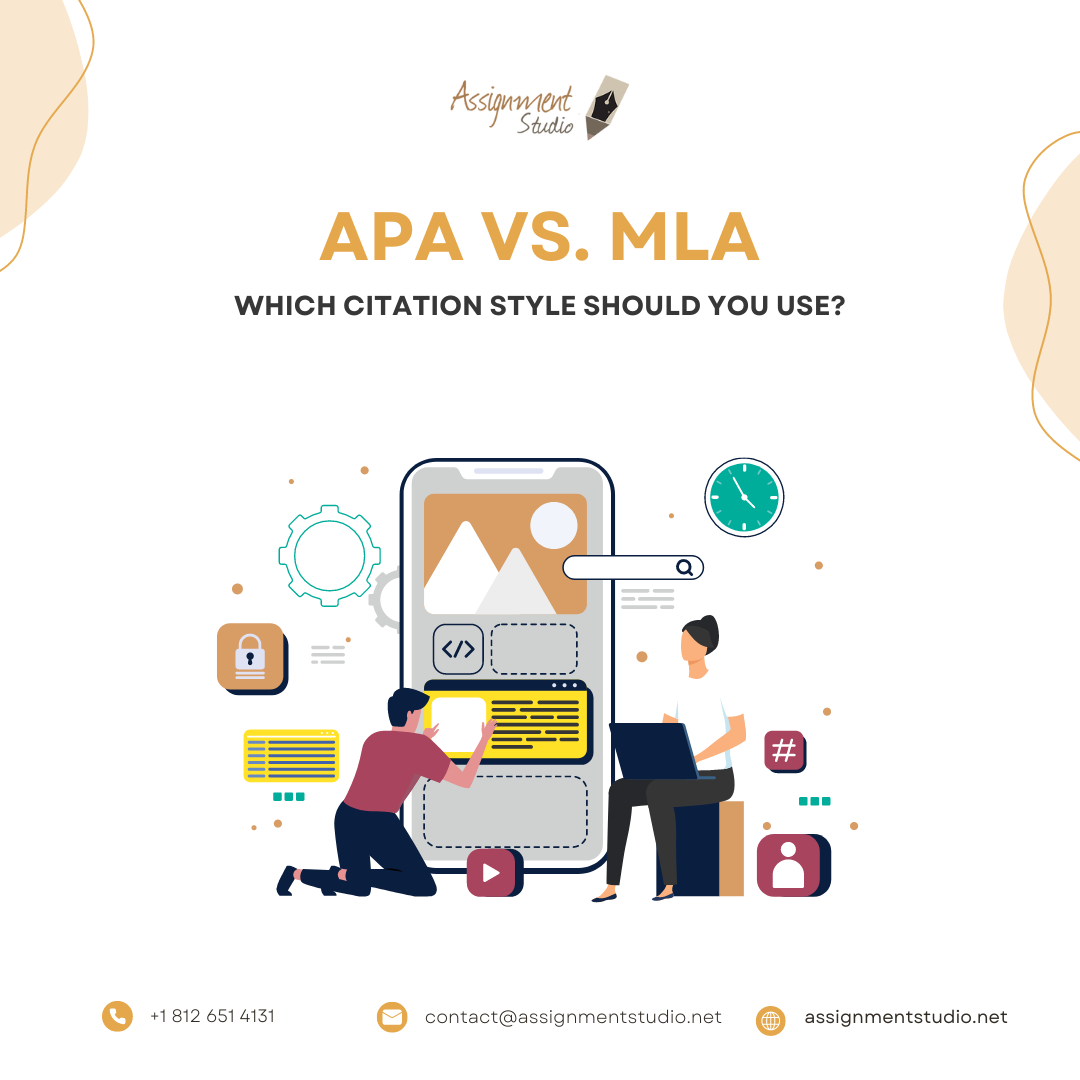
When it comes to academic writing, one of the most crucial aspects is proper citation. As a student in the United States, you’ll likely encounter two main citation styles: APA (American Psychological Association) and MLA (Modern Language Association). But how do you know which one to use? This comprehensive guide will break down the differences between APA and MLA, helping you choose the right citation style for your academic papers.
Table of Contents
Understanding Citation Styles
Before diving into the specifics of APA and MLA, let’s clarify what citation styles are and why they matter.
What Are Citation Styles?
Citation styles are standardized formats for crediting sources in academic writing. They provide a consistent way to reference books, articles, websites, and other materials you’ve used in your research.
Why Are Citations Important?
- Avoid plagiarism: Proper citations show that you’re giving credit to original authors.
- Demonstrate research quality: Citations showcase the breadth and depth of your research.
- Allow fact-checking: Readers can easily verify your sources and explore topics further.
- Contribute to academic discourse: Citations help connect your work to the broader academic conversation.
APA Style: An Overview
The American Psychological Association (APA) style is widely used in the social sciences, education, and some health sciences.
Key Features of APA Style
- Author-date citations in text
- Reference list at the end of the document
- Emphasis on publication date
- Specific format for title page and abstract
When to Use APA Style
APA is typically required for:
- Psychology papers
- Education research
- Sociology studies
- Nursing and healthcare reports
- Business and economics papers
MLA Style: An Overview
The Modern Language Association (MLA) style is commonly used in the humanities, particularly in literature, language studies, and cultural studies.
Key Features of MLA Style
- Author-page number citations in text
- Works Cited list at the end of the document
- Emphasis on author names
- Specific format for the first page
When to Use MLA Style
MLA is typically required for:
- English literature papers
- Foreign language and literature studies
- Cultural studies
- Arts and theater research
- Media studies
APA vs. MLA: Key Differences
Now that we’ve covered the basics, let’s explore the main differences between APA and MLA styles.
In-Text Citations
APA:
- Format: (Author’s Last Name, Year)
- Example: (Smith, 2020)
- With page number: (Smith, 2020, p. 25)
MLA:
- Format: (Author’s Last Name Page Number)
- Example: (Smith 25)
- No comma between name and page number
Reference List vs. Works Cited
APA uses a “References” page, while MLA uses a “Works Cited” page. The formatting of entries differs as well.
APA Reference Example: Smith, J. (2020). The art of citation. Academic Press.
MLA Works Cited Example: Smith, John. The Art of Citation. Academic Press, 2020.
Title Page Requirements
APA:
- Requires a separate title page
- Includes running head, page number, title, author name, and institutional affiliation
MLA:
- No separate title page
- First page includes student name, instructor name, course, and date in the top left corner
Headings and Subheadings
APA:
- Uses up to five levels of headings
- Each level has a specific format (e.g., centered, bold, italicized)
MLA:
- Recommends a simpler heading structure
- Usually uses up to three levels of headings
Date Formatting
APA:
- Uses the format: Year, Month Day
- Example: 2020, June 15
MLA:
- Uses the format: Day Month Year
- Example: 15 June 2020
Choosing Between APA and MLA
Now that you understand the key differences, how do you decide which style to use? Here are some factors to consider:
- Course Requirements
Always check your course syllabus or ask your instructor about the preferred citation style. Many professors have a strong preference for either APA or MLA.
- Field of Study
As mentioned earlier, certain academic disciplines tend to favor one style over the other. Social sciences and sciences often use APA, while humanities typically use MLA.
- Journal or Publication Guidelines
If you’re writing for a specific journal or publication, check their submission guidelines. Many have strict requirements for citation styles.
- Personal Preference
If you have the freedom to choose, consider which style feels more natural to you. Some students find APA’s emphasis on dates helpful, while others prefer MLA’s simpler in-text citations.
Tips for Mastering APA and MLA Citations
Regardless of which style you choose, here are some tips to help you cite sources correctly:
- Use Citation Management Tools
Software like Zotero, Mendeley, or EndNote can help you organize your sources and generate citations automatically.
- Consult Official Style Guides
The APA Publication Manual and the MLA Handbook are authoritative sources for citation rules.
- Practice, Practice, Practice
The more you use a citation style, the more familiar it becomes. Try creating practice citations for different types of sources.
- Double-Check Your Work
Always proofread your citations and reference list/works cited page for accuracy and consistency.
- Stay Updated
Citation styles are periodically updated. Make sure you’re using the most current edition of the style guide.
Common Mistakes to Avoid
When using APA or MLA, watch out for these common errors:
- Inconsistent formatting
- Misplaced punctuation in citations
- Forgetting to cite paraphrased information
- Incorrectly formatting digital sources
- Mixing up citation styles within a single paper
The Impact of Proper Citations on Academic Success
Using the correct citation style and citing sources accurately can significantly impact your academic performance. Here’s why:
- Better Grades
Proper citations demonstrate attention to detail and adherence to academic standards, which can positively influence your grades.
- Increased Credibility
Well-cited papers show that you’ve done thorough research and can back up your arguments with reliable sources.
- Improved Writing Skills
Learning to cite correctly enhances your overall academic writing skills and attention to detail.
- Ethical Academic Practice
By giving credit where it’s due, you’re participating in ethical scholarship and avoiding academic integrity issues.
Future Trends in Citation Styles
As academic writing evolves, so do citation styles. Here are some trends to watch:
- Digital Object Identifiers (DOIs)
Both APA and MLA are increasingly emphasizing the use of DOIs for digital sources.
- Social Media Citations
As social media becomes a more common source in academic writing, citation styles are adapting to include guidelines for these platforms.
- Automated Citation Tools
While helpful, it’s important to note that these tools aren’t always 100% accurate. Always double-check their output.
Conclusion: Making the Right Choice
Choosing between APA and MLA ultimately depends on your field of study, instructor requirements, and the nature of your research. Both styles have their strengths and are designed to help you credit sources accurately and consistently.
Remember, the goal of any citation style is to give proper credit to your sources and provide a clear trail for readers to follow. Whether you’re team APA or team MLA, mastering your chosen style will serve you well throughout your academic career and beyond.
By understanding the nuances of APA and MLA, you’ll be better equipped to produce high-quality academic papers that meet the standards of your field. So, take the time to learn these styles, practice them regularly, and don’t hesitate to consult official guides when in doubt. Your future scholarly self will thank you!






